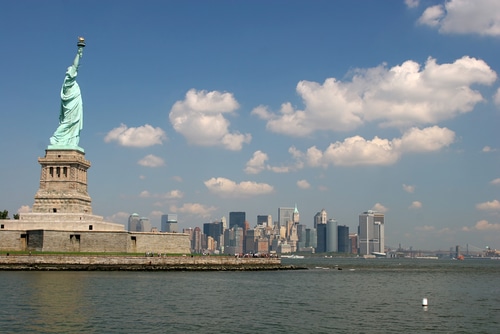Dutch Governor Peter Stuyvesant surrenders New Amsterdam, the capital of New Netherland, to an English naval squadron under Colonel Richard Nicolls. Stuyvesant had hoped to resist the English, but he was an unpopular ruler, and his Dutch subjects refused to rally around him. Following its capture, New Amsterdam’s name was changed to New York, in honor of the Duke of York, who organized the mission.
The colony of New Netherland was established by the Dutch West India Company in 1624 and grew to encompass all of present-day New York City and parts of Long Island, Connecticut, and New Jersey. A successful Dutch settlement in the colony grew up on the southern tip of Manhattan Island and was christened New Amsterdam.
To legitimatize Dutch claims to New Amsterdam, Dutch governor Peter Minuit formally purchased Manhattan from the local tribe from which it derives it name in 1626. According to legend, the Manhattans–Indians of Algonquian linguistic stock–agreed to give up the island in exchange for trinkets valued at only $24. However, as they were ignorant of European customs of property and contracts, it was not long before the Manhattans came into armed conflict with the expanding Dutch settlement at New Amsterdam. Beginning in 1641, a protracted war was fought between the colonists and the Manhattans, which resulted in the death of more than 1,000 Indians and settlers.
In 1664, New Amsterdam passed to English control, and English and Dutch settlers lived together peacefully. In 1673, there was a short interruption of English rule when the Netherlands temporary regained the settlement. In 1674, New York was returned to the English, and in 1686 it became the first city in the colonies to receive a royal charter. After the American Revolution, it became the first capital of the United States.


